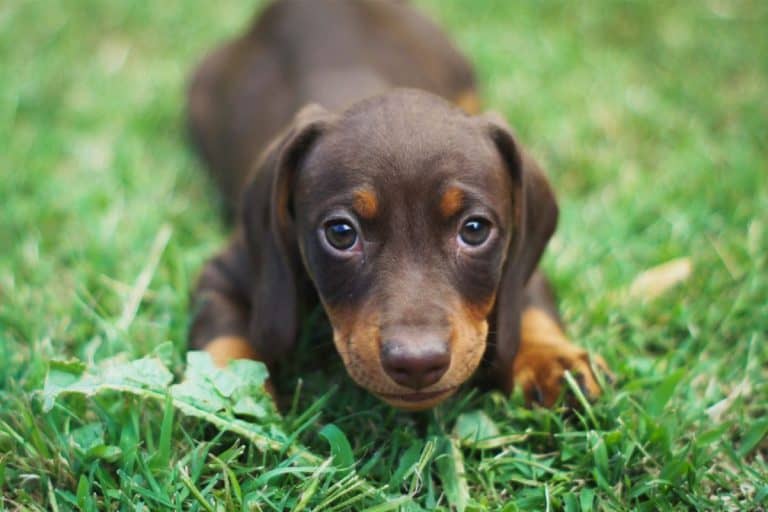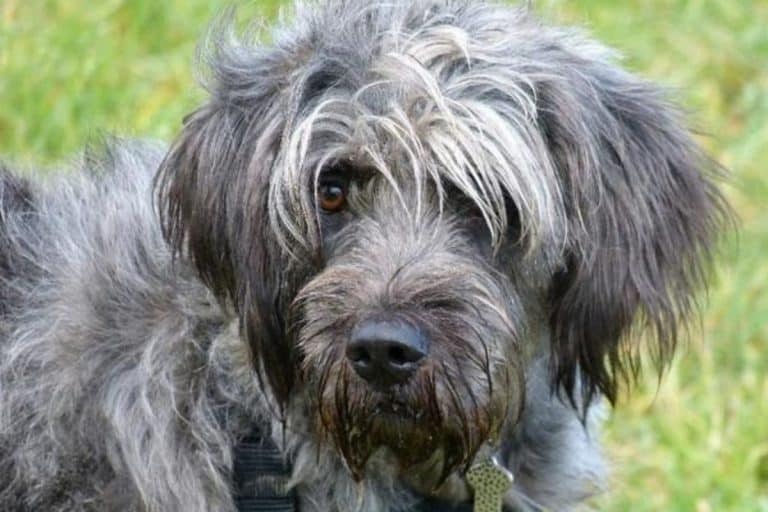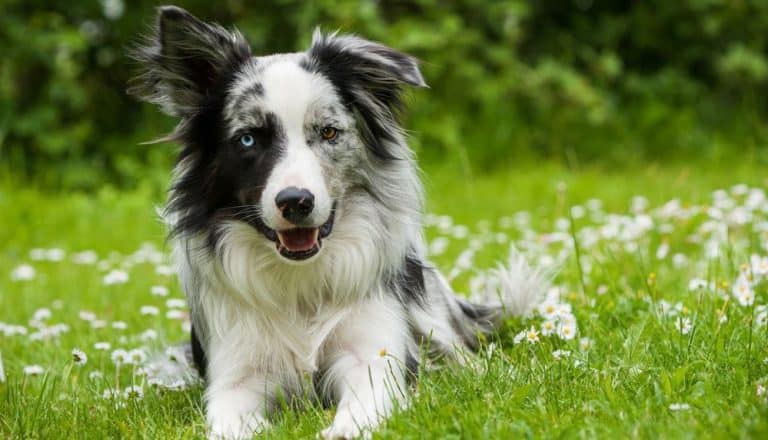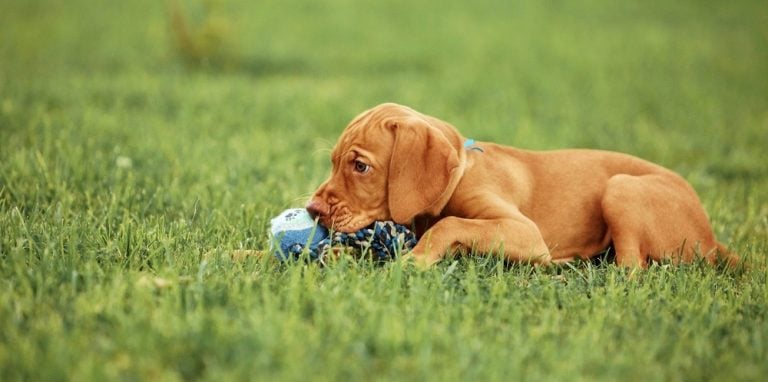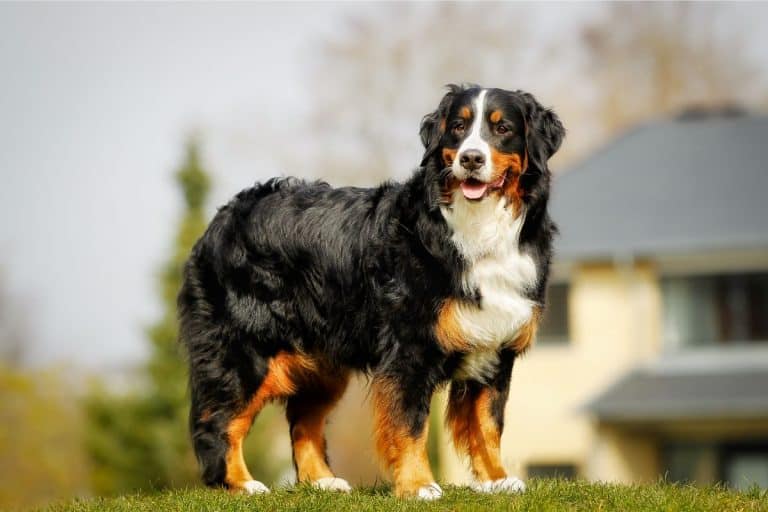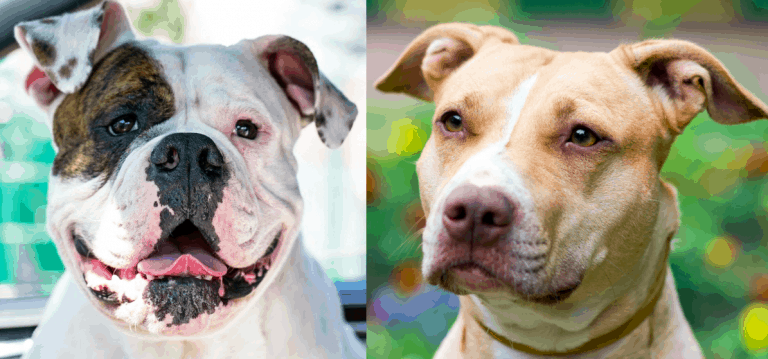All You Need To Know About Blue Dachshunds
Dachshunds are loved for their unusual body shape, sharp intelligence and lively personality.
There are a variety of colors in this breed and one of these is the Blue Dachshund. If you are curious about these dogs we have all you need to know about Blue Dachshunds.
A Dachshund’s appearance is very distinctive, their short legs supporting an elongated body makes them instantly recognizable. Not to mention those adorable floppy ears and big dog bark.
They are hugely popular and have three different coat types, smooth, wire haired and long haired. And of course there are many coat colors too.
The Blue Dachshund is one of these colors, and they too come in smooth, wire haired and long haired types.
But what makes a Blue Dachshund blue, what is their temperament like, do they have the same health issues as other Dachshunds and how much do they cost. We will answer all of these questions
Blue Dachshund
If you didn’t know there was a Blue Dachshund you may be surprised to know that there are actually 25 different colors of Dachshund.
Blue Dachshunds come in all the different coat varieties, smooth, wirehaired and long haired.
They also come in the standard size of around 15-35 pounds and the miniature size of approximately 11 pounds or less.
The Blue Dachshund is arguably one of the best looking of all the varieties of Dachshund and there are different markings within this type including the dapple and the double dapple.
Their blue color is actually a muted black and in order for a Dachshund to be blue both parents must be blue or have the blue color gene.
The coat is more of a gunmetal gray color with a bluish tint, but the name Blue Dachshund is more appealing.
As with other Dachshunds the Blue Dachshunds are lively, intelligent dogs with a big personality.
They are however more stubborn than other types which can make training a challenge but lots of fun.
When you take on a Blue Dachshund not only should you be aware of their personality and temperament but also some of the potential health problems that they may face.
Along with the rather long list associated with the Dachshund breed in general, Blue Dachshunds have their own potential problems.
But above any negative aspects associated with the Blue Dachshund their gorgeous looks, sharp intelligence and great personality shine through and make them a popular and well loved dog.
What Makes A Blue Dachshund’s Coat Blue?
In order for a Dachshund to have a blue coat both parents have to be blue or have the blue coat gene.
This blue is actually a diluted black which takes on the appearance of a gunmetal gray color with a tinge of blue.
A coat that is diluted is a lighter color than the original and is also duller, so this creates the appearance of a new color in the coat. The cause of a diluted coat color is a recessive gene.
But if just one parent has this gene and the other doesn’t the resulting litter will not be blue.
It takes both parents to have the gene for the puppies’ coats to be the diluted shade of black that looks blue.
Within this coloring there are several variations of diluted coat colors. Those are as follows:
- Blue and tan
- Solid blue
- Blue and cream
- Solid Isabella
- Isabella and tan
- Isabella and cream
The solid blue color is not as common as the other more typically bi-colored Blue Dachshunds which are more prevalent.
Although the American Kennel Club recognizes the Blue Dachshund in the long haired variety they are more likely to occur in smooth coat types.
For a Dachshund to be truly blue there must be no black anywhere on their coat.
Apart from their stunning coat color, Blue Dachshunds are typical of the breed and have the same body shape and features.
Blue Dapple Dachshund
The Blue Dapple Dachshund is one of the breed’s variations in coat and color markings.
This is a beautiful coat with lots of patterns and occurs because of genetic differences in the Dachshund.
The gene responsible for this patterning is the merle gene. When a Dapple Dachshund is bred with a non-dapple the resulting litter will be Dapple Dachshunds.
There will be light and dark colored patches on a Dapple Dachshund’s coat.
This is because of a swirling or spotted pattern in one color on top of a base coat of another color or there will be two base colors.
How obvious or striking the dappling will be depends on the base color. On some dogs it can be very bold and stand out while in others it is very subtle with only the occasional spot or swirl.
There are no real ethical issues with single dapple markings as long as the puppies come from a reputable breeder.
It’s possible to have dapple puppies in all the coat colors including cream, blue, black, black and cream, black and tan, and Isabella.
The nails and nose on a Dapple Dachshund is usually black unless the dog has a dilute or chocolate coloring in their coat. In these cases, the nose and nails may be brown.
A Dapple Dachshund’s eyes should be dark but if they are dilute colored the eyes may be blue.
Double Dapple Dachshund
A Double Dapple Dachshund is the result of two Dapple Dachshunds being bred.
These pretty puppies are very appealing, but there are real health concerns with this type of Dachshund that you should be aware of before buying one.
Some people don’t believe that two Dapple Dachshunds should be bred due to the resulting health issues that can occur in the puppies.
Their coats are an unusual blend of dapple markings and large patches of white. However the American Kennel Club does not list the Double Dapple as an acceptable pattern in their breed standard. In the UK it is not possible to register a Double Dapple with their kennel club.
Breeding two Dapple Dachshunds results in the passing on of the white marking recessive gene.
This causes problems with confirmation, hearing and vision. These are the reasons why the American and UK kennel clubs do not encourage this variation of Dachshund.
The markings on a Double Dapple Dachshund are quite distinctive. They have large patches of white in their coat with a dapple pattern on top.
Some will have more white in their fur than others, but most will have it on their nose, neck, paws and tail.
The dapple pattern itself is more intricate than the single dapple too. Although it may look attractive, white fur is associated with health defects in Dachshunds. These dogs are also more likely to have blue eyes.
Blue Eyed Dachshunds Vs Blue Dachshunds
As we have noted above, Double Dapple Dachshunds are more likely to have blue eyes than brown or dark eyes especially if there is white fur on the dog’s face.
So in most cases the only Dachshunds that will have blue eyes are Double Dapple.
Blue Dachshunds on the other hand will typically have brown or amber eyes. So there is a difference between a Blue Dachshund and a Dachshund with blue eyes.
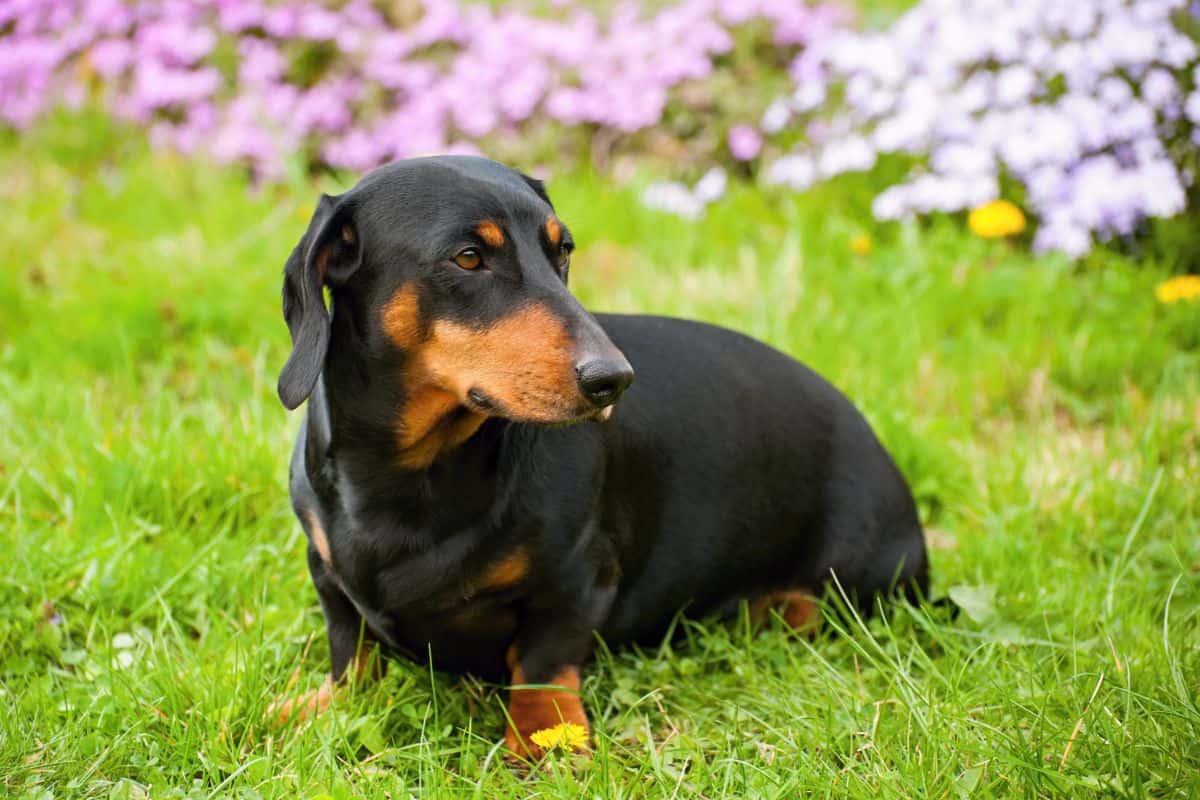
Blue Dachshunds are not very common, and their coloring is actually a diluted black coat which has a blue tint.
This is caused by a genetic mutation which is one of the reasons why the Blue Dachshund is relatively rare.
Blue eyed Dachshunds are either Double Dapple Dachshunds or have a genetic mutation called albinism.
This causes the reduced production of melanin which is a pigment in the skin. So albino Dachshunds will be white with pink noses and blue eyes.
While Blue Dachshunds have their fair share of health problems an albino Dachshund with blue eyes will have severe issues.
Most will either be partially or fully deaf and blind, and they will often have cardiac problems such as an enlarged heart.
Double Dapple Dachshunds often have blue eyes or one blue and one brown eye due to the recessive gene that causes the dappling.
Blue eyed Dachshunds and Blue Dachshunds are therefore not the same thing, and it is important to know the difference between them.
Blue Dachshund Temperament & Intelligence
The Blue Dachshund has a great personality and temperament, they are full of energy and very affectionate especially towards their owner.
A Blue Dachshund will share a lot of the traits of other types including their stubborn and bossy nature.
They love to play outside and to dig, this comes naturally to them from their instinct as previous hunting dogs.
Dachshunds are confident dogs and love to explore new places and things, and they love to meet new people and animals.
Despite their diminutive size they are not intimidated by bigger pets and will happily greet them and say hello.
As they are an intelligent dog, training a Dachshund will not be difficult, although they are quite stubborn, so you may come up against some resistance.
However, some bribery and encouragement with treats works wonders with this little dog.
They are also incredibly affectionate and loyal to their owners, often following them around hoping for lots of attention and cuddles.
Sometimes this closeness can become clinginess and that can lead to separation anxiety.
A dog that suffers from separation anxiety can bark and whine a lot, but it can also manifest as destructive behavior.
Some Dachshunds when left alone will start chewing things and generally making a mess. Something to bear in mind if you ever have to leave your Blue Dachshund at home.
Overall Dachshunds have a lovely if stubborn temperament and are very smart.
Size And Appearance
Blue Dachshunds come in standard and miniature sizes. The standard size is typically between 15 and 35 pounds and measures around 8 to 9 inches in height. The miniature is classed as under 11 pounds and 5 to 6 inches tall.
The Blue Dachshund’s body shape is similar to that of other Dachshunds both in the standard and miniature sizes. They have short legs, elongated bodies, pointy snouts and floppy ears.
Blue Dachshunds like the rest of their breed are quite surprisingly wide and muscular across their chest. They also have a downward pointing tail. But obviously what sets them apart is their blue coat.
According to the American Kennel Club the wire haired and short haired varieties of Blue Dachshunds are not recognized but the long haired variety is.
However there should be no black in the coat in order for the dog to be recognized as a true Blue Dachshund.
The colors of the Blue Dachshund can be solid blue, blue and cream and blue and tan.
On the blue and tan and blue and cream Dachshunds the tan and cream can appear on several parts of the dog including:
- Above the eyes
- Sides of the jaw
- Throat
- Chest
- Paws
- Inner part of the ear
- Inside and behind the front legs
- Underside of the tail
The Blue Dachshund’s appearance is striking and beautiful, it is just a shame that such a lovely loving dog comes with so many health issues.
Grooming
To keep your Blue Dachshund looking wonderful you will want to keep them well groomed.
They do shed and are not hypoallergenic dogs. However, the amount that they shed will vary through the seasons.
You should aim to groom your Blue Dachshund five times a week. This will reduce the amount of shedding and keep their coat in optimum condition, looking shiny and healthy.
Every four to six weeks you should bathe your Blue Dachshund. You should also trim their nails, clean their ears and check their skin.
When you check their skin you are looking for any cuts, lesions or any signs of the skin conditions that affect Dachshunds.
When you are grooming your Blue Dachshund take the opportunity to check them thoroughly for any lumps or bumps.
One of the conditions that Blue Dachshunds are prone to is color dilution alopecia.
If your Dachshund has this condition then you should make sure that you are using all natural dog shampoos.
You will also need to apply ointment to their skin to stop them drying out and being patchy.
CDA causes a Blue Dachshund’s hair to fall out, so it is important to keep a close eye on the condition of their skin.
If you don’t feel confident about grooming your own Blue Dachshund then you can take them to a professional grooming salon instead.
It is important to keep them regularly groomed especially for the sake of their skin.
Nutrition And Exercise
The kind of food you give to your Blue Dachshund will depend on their particular tastes and needs.
Some prefer dry kibble, others like wet food, and you may even have a fussy pup who will only eat what you make fresh at home.
Whatever type of food you give your Dachshund you need to make sure that they are getting all the nutrients and vitamins from their meals.
Due to the many health issues that they suffer from it is important that Blue Dachshunds get a lot of lean protein in their diet.
Keep the carbohydrates to a minimum and make sure that any treats are healthy ones and deducted from the total weight of food allowance for your Dachshund for the day.
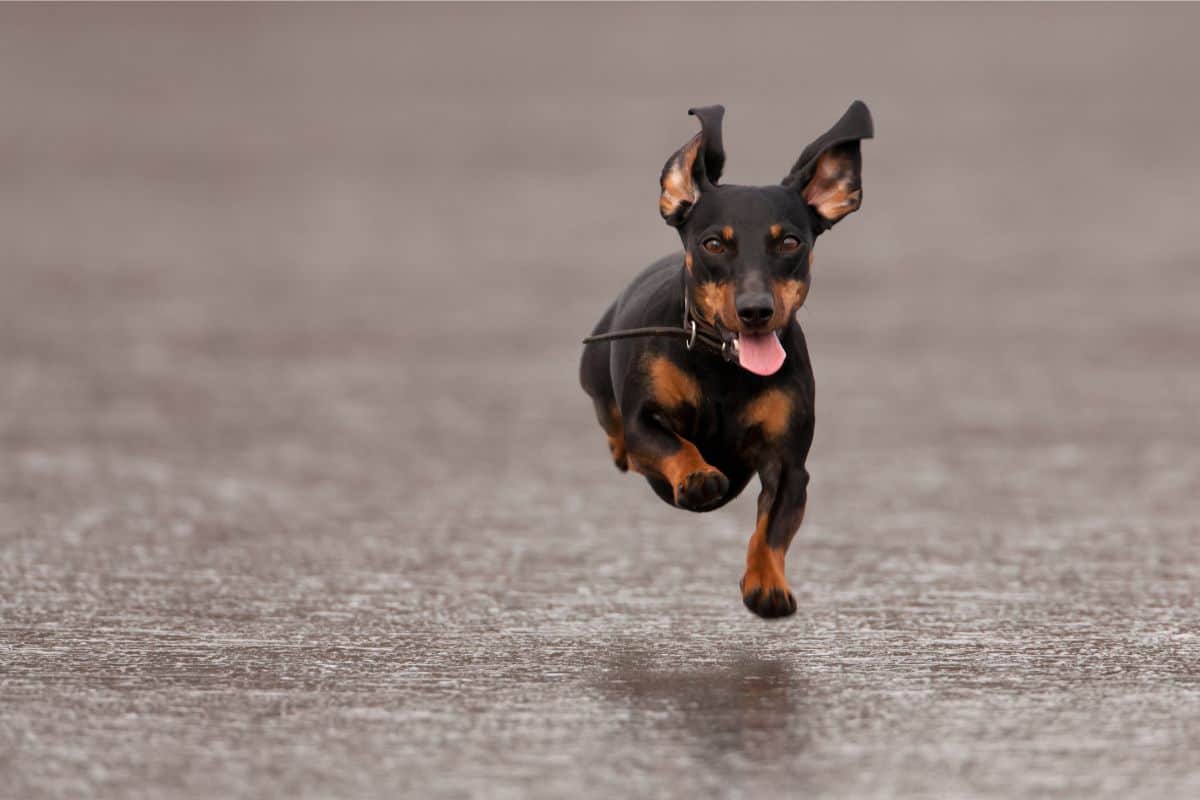
Exercise is important for your Blue Dachshund, and you should make sure that they are walked every day.
It is recommended that they have thirty minutes of exercise per day. This can be one walk, or you can split into two of fifteen minutes each.
As all Dachshunds are prone to obesity it is important that your dog gets enough exercise to maintain a healthy weight.
Some people may assume that such a small dog does not need to be exercised, but this is not the case, and they need to be walked like any other dog.
Blue Dachshund Health Problems
Dachshunds as a breed have a lot of health issues. This is mostly as a result of their genetic makeup and the fact that their body shape and skeletal design is a result of a dwarfism trait.
Their long elongated back and short legs mean that they suffer from spine and joint issues.
Blue Dachshunds have many of the same health related problems that other Dachshunds have, but they also have some that are specific to them.
Color Dilution Alopecia (CDA)
Color dilution alopecia is a condition that affects Dachshunds that have a coat color that is a diluted base color. Blue Dachshunds are one of these varieties.
If you have a Blue Dachshund you should familiarize yourself with the symptoms of this condition so that you can spot it in your dog if it manifests.
The symptoms of color dilution alopecia or CDA are:
- Dry, brittle and dull hair
- Hair falling out at the follicle
- Slow hair growth
- Slow regrowth
- Thinning of the hair
- Bald patches
- Hair loss
By itself CDA can be managed, but it can result in bald patches on your Blue Dachshund that are vulnerable to sunburn which in turn can lead to skin cancer.
Intervertebral Disc Disease (IVDD)
Intervertebral disc disease or IVDD is a condition that affects all breeds of Dachshunds.
This is one of the most common ailments that affects Dachshunds and one in four will develop the condition.
This is due to the breed’s long back and short legs and can be exacerbated by strenuous exercise.
If you have a lot of stairs or steps in your home you should invest in a pet ramp for your Dachshund to reduce the stain on their spine.
Obesity
Blue Dachshunds like others of their breed are predisposed to obesity. This is why it is very important that their diet is strictly controlled to make sure their caloric intake is not above what they need.
Lean protein and food rich in omega 3 are important for their health. Carbohydrates should be limited, and your Dachshund should have thirty minutes of exercise per day.
Diabetes
While obesity can be a trigger for diabetes it is possible for your Dachshund to develop this condition through genetic disposition.
Sudden weight loss, increased thirst and frequent urination are all warning signs of diabetes.
Dental Issues
Blue Dachshunds can suffer from crooked teeth due to their small mouths. They are also at heightened risk of dental decay. Avoid giving your Dachshund any foods that are high in sugar.
Eye Problems
Like many other Dachshunds the Blue Dachshund is at risk of eye health problems.
Glaucoma, cataracts and blindness are all complications that many of these dogs can suffer from.
Blue Dachshunds are also at risk of developing progressive retinal atrophy which can lead to blindness and for which there is no cure.
Seizures
Dachshunds are also predisposed to seizures which can be triggered by inherited conditions and sometimes by lifestyle or environmental factors.
Blue Dachshund Life Expectancy
The Dachshund is one of the longest lived dog breeds with some living to 20 or 25 years of age.
However, the average lifespan of a Dachshund is more likely to be 12-16 years.
The life expectancy of a Blue Dachshund is going to be less than the average due to the added problems that come from being a diluted color variety.
Due to the extra health conditions that this Dachshund suffers from their lifespan may be shortened by 2-3 years.
Of course, this is not set in stone and some Blue Dachshunds may live longer than another variety of the breed. However, it should be noted that there are additional issues due to the genetic makeup of the Blue Dachshund.
How Much Does A Blue Dachshund Cost?
If you have decided that you want to buy a Blue Dachshund then you may be wondering how much they cost.
As the Blue Dachshund is relatively rare there will be a premium price to pay for these dogs.
A regular colored Dachshund can sell for between $900-$2,500 from a reputable breeder and a Blue Dachshund is more likely to cost you more.
You should only buy your Blue Dachshund from a reputable breeder and don’t be swayed by special deals on prices.
A good breeder knows the true worth of one of these dogs and will not typically do ‘deals’. This could be the sign of a disreputable breeder.
Don’t forget the cost of the puppy is just the start of your financial commitment to this dog.
Why Do Blue Dachshunds Cost More?
A Blue Dachshund will cost more because they are not a very common color of Dachshund and finding one from a reputable breeder may be difficult.
Your location may also be a factor in how much you pay for a Blue Dachshund puppy.
In more affluent areas the price can be a lot higher than in more modest areas.
The quality of the breeder and the registration of the parents will affect the price of the puppy.
Those Dachshunds that have show potential will sell for more than a puppy that is sold as a pet.
Breeding and showing rights will be given with puppies with show potential.
The price you pay for a Blue Dachshund may be affected by the coat type. Short haired Blue Dachshunds tend to cost more than long haired or wire haired.
Is A Blue Dachshund The Right Choice For You?
Deciding whether to buy a Blue Dachshund should not be done lightly and will require some research on your part.
Dachshunds as a breed are very popular but do come with many potential health issues.
Therefore you should be aware not just of the commitment that you will need to make to owning a dog that may become ill but also of the expense of treating those illnesses.
Start with asking questions of the breeder about the care of a Blue Dachshund and then speak to those who already own one. You could do this in person or through an online forum.
You can also speak to your vet and ask them any questions you may have about the Blue Dachshund’s health.
Before you commit to owning one make sure you have all the information you will need.
Final Thoughts
There are many things to consider before you go ahead and buy a Blue Dachshund.
These very unique dogs will give you years of pleasure and companionship should you decide to become a Blue Dachshund owner.
They will be admired wherever you go and everyone will want to pet them.
Despite all the issues that may come with owning a Blue Dachshund they are worth the time and effort you will put into their care.
Your Dachshund will reward you with a lot of loyalty and so much affection that you will wonder how you ever considered not owning one.
We hope this guide to Blue Dachshunds has been useful in helping you make your decision about owning one.

